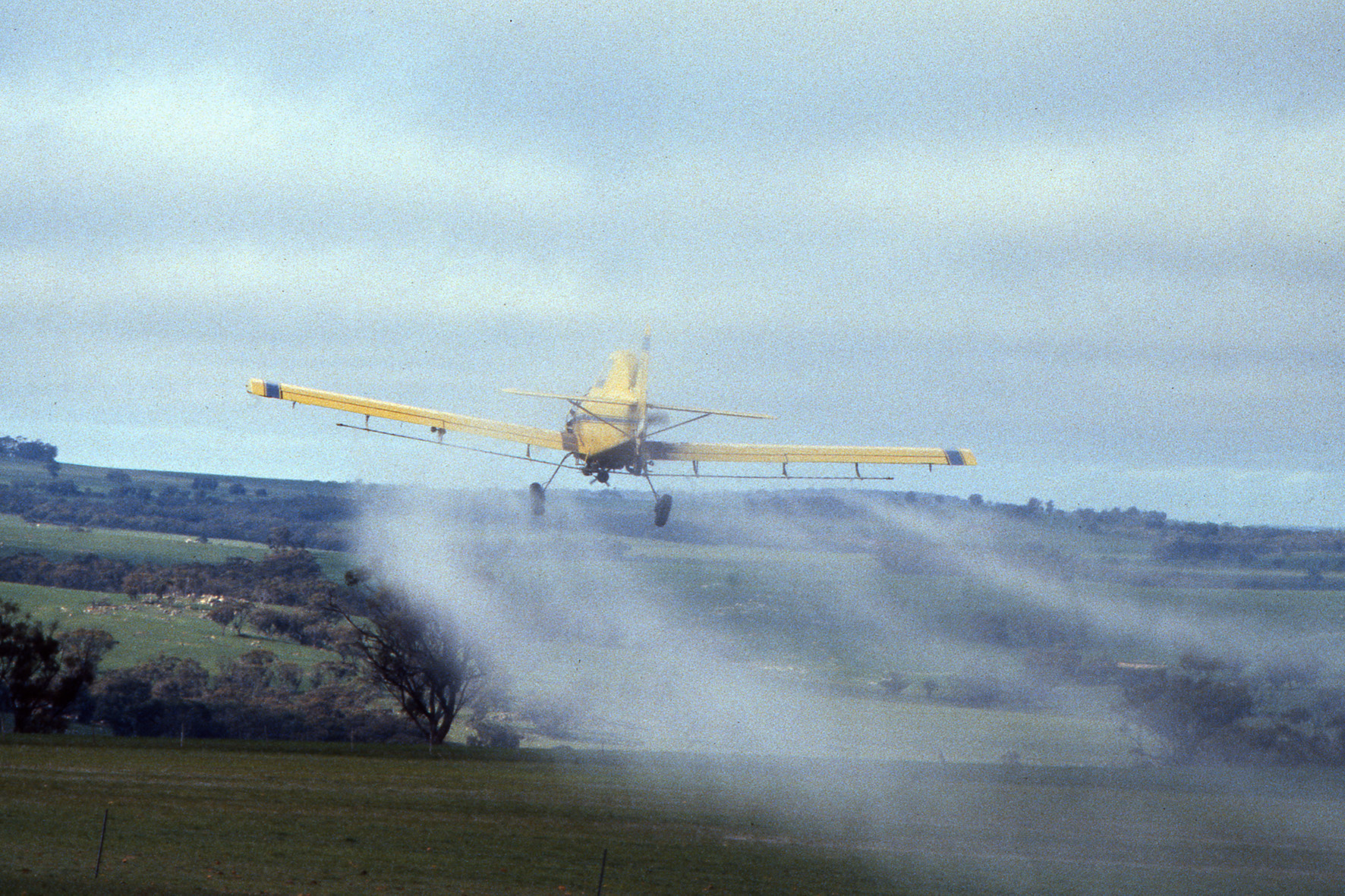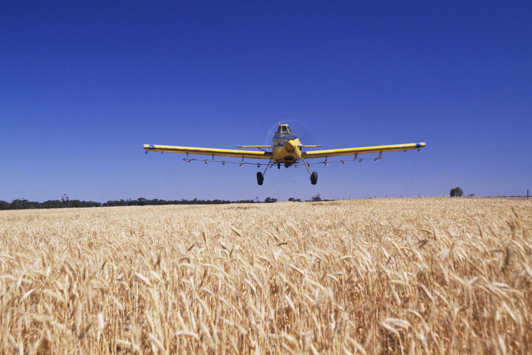
The Biosecurity and Agriculture Management (Aerial Application) Regulations 2018 regulate the aerial application of agricultural chemical products.
Key outcomes include:
- Awareness of the need to use chemicals safely and responsibly for both piloted and remotely piloted aircraft.
- Users are competent in the aerial application of agricultural chemicals and can demonstrate competency through training.
- National training competencies or equivalent reflect the required management of agricultural chemical risk.
A person must not apply an agricultural chemical product from an aircraft unless they have the qualifications prescribed by the regulations or an approved equivalent.
Biosecurity and Agriculture Management (Aerial Application) Regulations 2018Qualification
The qualification required for both piloted and remotely piloted aircraft is the Aerial Application Association of Australia Spraysafe Agricultural Pilot Course or equivalent.
Equivalent training includes the following competencies:
- AHCCHM303 Prepare and apply chemicals or AHCCHM307 Prepare and apply chemicals to control pest, weeds and diseases.
- AHCCHM304 Transport and store chemicals
- AHCPMG301 Control weeds
- AHCPMG302 Control plant pests, diseases and disorders
- AHCCHM404 Develop procedures to minimise risks in the use of chemicals
- AHCCHM405 Plan and implement a chemical use program.
An exception to the requirement for the Spraysafe Agricultural Pilot qualification (or equivalent), is for a landowner, who owns a remotely piloted aircraft (up to 150kg) and only operates it over their own land without remuneration.
In this case, the remote pilot will require the following units of competency:
- AHCCHM303 Prepare and apply chemicals or AHCCHM307 Prepare and apply chemicals to control pest, weeds and diseases; and
- AHCCHM304 Transport and store chemicals.
The Director General may issue an authorisation for a class of persons to apply a specified agricultural chemical product from an aircraft, exempting that class of persons from the training requirements of the regulations (for example registered 1080 meat baits).
Record keeping
The following records are to be made and kept for each application of agricultural chemical product. These are to be kept for 3 years and to be available for inspection if requested by an inspector:
- date and time the product was applied
- name and address of the person who applied the product
- name and address of the owner or occupier of the land to which the product was applied
- total area of the land on which the product was applied
- location of the land
- estimated velocity and the direction of the wind at the time of the application
- name of the product that was applied
- quantity and concentration of the agricultural chemicals applied per hectare
- application equipment used
- type of crops on which the product was applied.
The application records are to be made not more than 48 hours after use and can be in written or electronic form.
Other requirements
Operators, pilots and remote pilots must meet the requirements of the Civil Aviation Safety Authority, who regulate Australian aviation safety.
Civil Aviation Safety Authority
